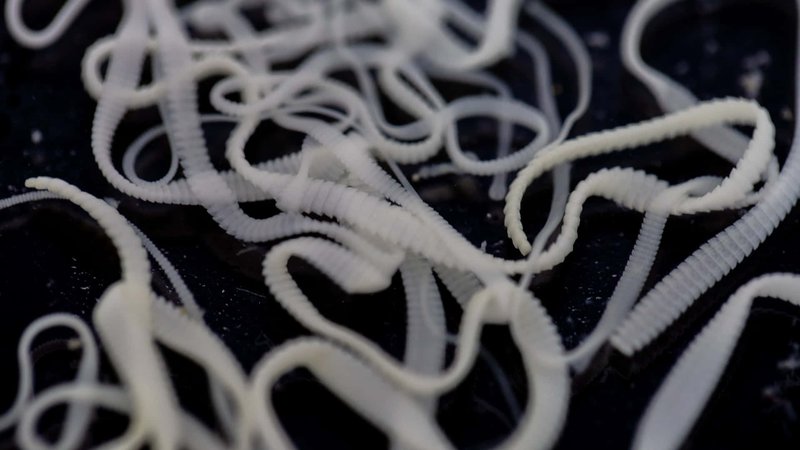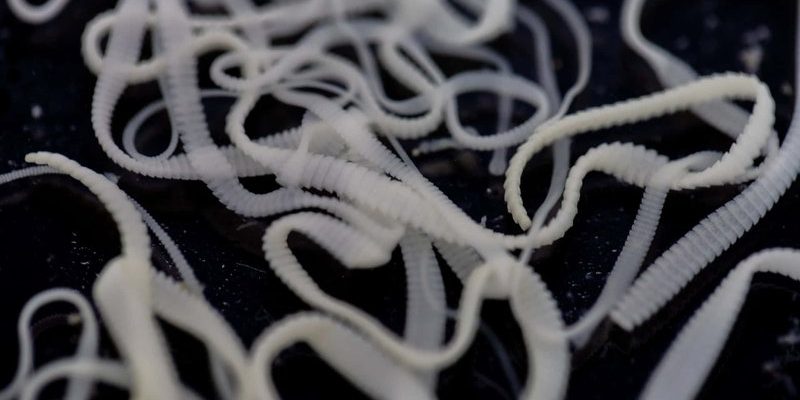
You might be wondering why we should care about tapeworms at all. After all, they’re often seen as mere nuisances. But they have ecological importance, serving as a food source for certain animals and helping maintain a balance in the natural world. By understanding the predators and environmental threats to tapeworm populations, we can gain insights into broader ecological dynamics and the ongoing health of our ecosystems.
Understanding Tapeworms and Their Role in the Ecosystem
Tapeworms are fascinating creatures that belong to the class Cestoda. They have long, flat bodies and can vary significantly in size—from a few millimeters to several meters long. Found primarily in the intestines of vertebrates, they absorb nutrients through their skin, which is a pretty nifty trick. What you might not know is that tapeworms often have complex life cycles, requiring multiple hosts to grow and reproduce.
These parasites can affect mammals, birds, reptiles, and even fish! They play an essential role in the food chain by helping regulate the populations of their hosts. When tapeworms infect a host, they can influence the host’s health and behavior, often leading to fascinating ecological consequences. For instance, a host that’s less healthy might be less active, thus affecting its predator’s food supply.
However, this balance can be disrupted. Factors such as environmental changes and predators can throw a wrench into the system. Let’s explore some of these predators and threats to tapeworms.
Natural Predators of Tapeworms
Like many organisms, tapeworms have their share of natural enemies. These predators can significantly affect tapeworm populations. Let’s take a closer look at some of the key players:
- Small mammals: Rodents and other small mammals can consume tapeworm eggs and larvae, limiting their spread.
- Birds: Certain birds, like chickens, can eat infected hosts and effectively reduce tapeworm populations.
- Other parasites: Some organisms, such as nematodes and other parasites, can consume tapeworms as part of their life cycle.
It’s interesting to think about how these predators fit into the broader food web. For example, when small mammals eat tapeworm larvae, they not only help control tapeworm populations but also enhance their own health by consuming these nutrients.
Human Impact on Tapeworm Populations
Humans significantly influence tapeworm populations, often without even realizing it. Activities such as agriculture, urbanization, and pollution can disrupt their environments. Here’s how:
1. Agricultural Practices: Pesticides and herbicides used in farming can kill off the insects that play a role in the tapeworm life cycle. Without these insects, tapeworms can struggle to find hosts.
2. Urban Development: As cities expand, natural habitats for tapeworms and their hosts can vanish. This loss of habitat leads to a decline in both animal populations and the parasites that rely on them.
3. Pollution: Chemicals entering the waterways can upset aquatic ecosystems, impacting both fish and the tapeworms that might live within them.
While these actions might seem unrelated to tapeworms, they highlight the interconnectedness of ecosystems. Disrupting one element can lead to unexpected consequences in others.
Climate Change and Its Effects on Tapeworm Populations
Climate change is another significant threat to tapeworms. As temperatures rise and weather patterns shift, the habitats suitable for both tapeworms and their hosts can change dramatically. Here are a few key effects:
– Temperature Sensitivity: Many tapeworms are sensitive to temperature changes, which can affect their reproduction rates. Warmer temperatures might favor some species but could be detrimental to others.
– Changing Host Availability: Climate change can alter the distribution of animals that host tapeworms. If a host species migrates to a different area, tapeworms may struggle to find suitable hosts, leading to population declines.
– Increased Disease Risks: Changes in climate can also promote the spread of diseases among hosts, impacting their health and potentially the tapeworms living within them.
Overall, climate change poses a significant challenge to tapeworm sustainability in the long run.
The Role of Biodiversity in Protecting Tapeworms
Biodiversity acts like a safety net for tapeworm populations. The presence of a wider range of species can help stabilize ecosystems, giving tapeworms a better chance of survival. Here’s how biodiversity plays a role:
– Varied Hosts: A greater variety of animals means more potential hosts for tapeworms. This diversity can help prevent any single species from being overpredated or decimated.
– Natural Pest Control: More species in an ecosystem create natural checks and balances. Different predators can help regulate tapeworm populations, ensuring that no one predator becomes too dominant.
– Ecosystem Resilience: Healthy ecosystems can recover more quickly from environmental changes or pressures, providing a more stable habitat for tapeworms.
In this way, protecting biodiversity isn’t just good for the environment; it supports the fragile world of tapeworms as well.
Conservation Efforts and Future Implications
Given the threats that tapeworms face, various conservation efforts are underway to protect them and their ecosystems. Initiatives include:
– Habitat Restoration: Programs aimed at restoring natural habitats can improve conditions for both tapeworms and their hosts.
– Education and Awareness: Raising awareness about the role of parasites in ecosystems can foster a better understanding of their importance, leading to more public support for conservation efforts.
– Sustainable Practices: Encouraging sustainable agriculture and fishing practices can reduce the negative impact on tapeworm populations.
While it may seem like a small-scale effort, every action contributes to the broader health of ecosystems. Ensuring that tapeworms can thrive is about maintaining balance in nature.
Tapeworms may seem like strange creatures to care about, but they highlight the intricate balance of life in ecosystems. Understanding the predators and environmental threats to tapeworm populations helps us appreciate their role in nature. When we think about these tiny inhabitants, we can see how every piece of the ecological puzzle matters.
So, next time you think about tapeworms, remember that they face challenges just like many other creatures. Predators and environmental impacts affect them in ways we are only beginning to understand. Protecting tapeworms means protecting the whole ecosystem, and that’s something worth caring about.

